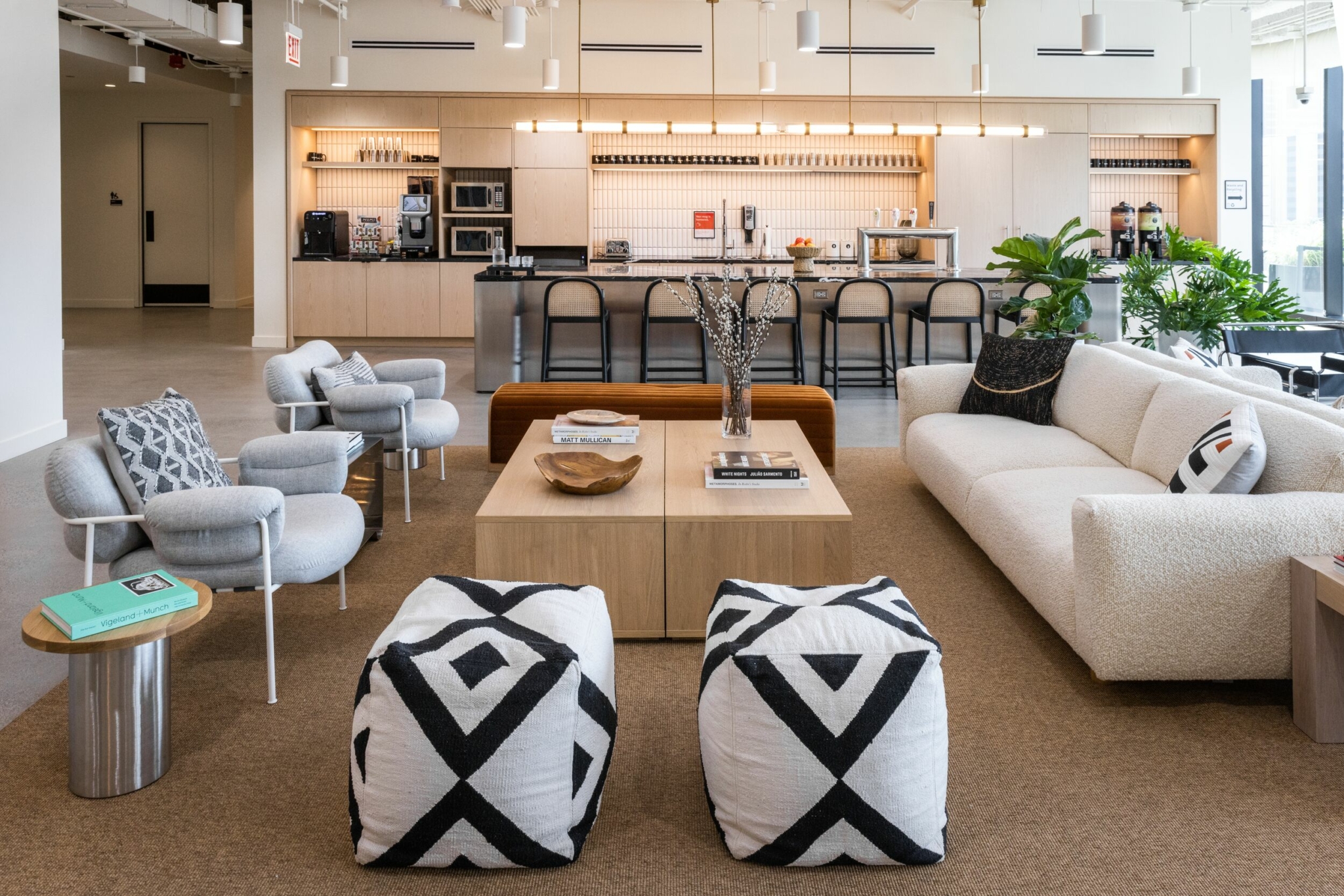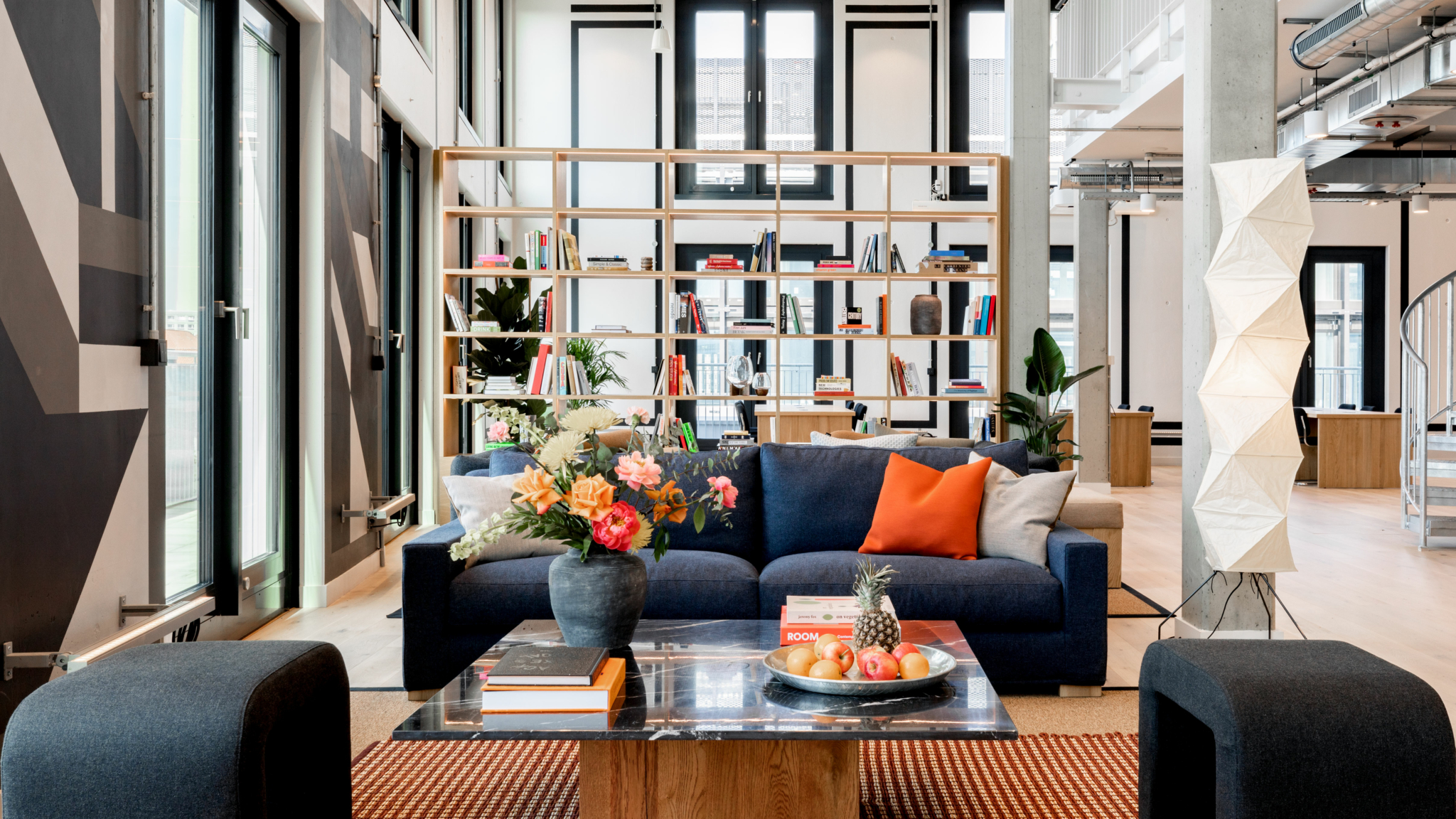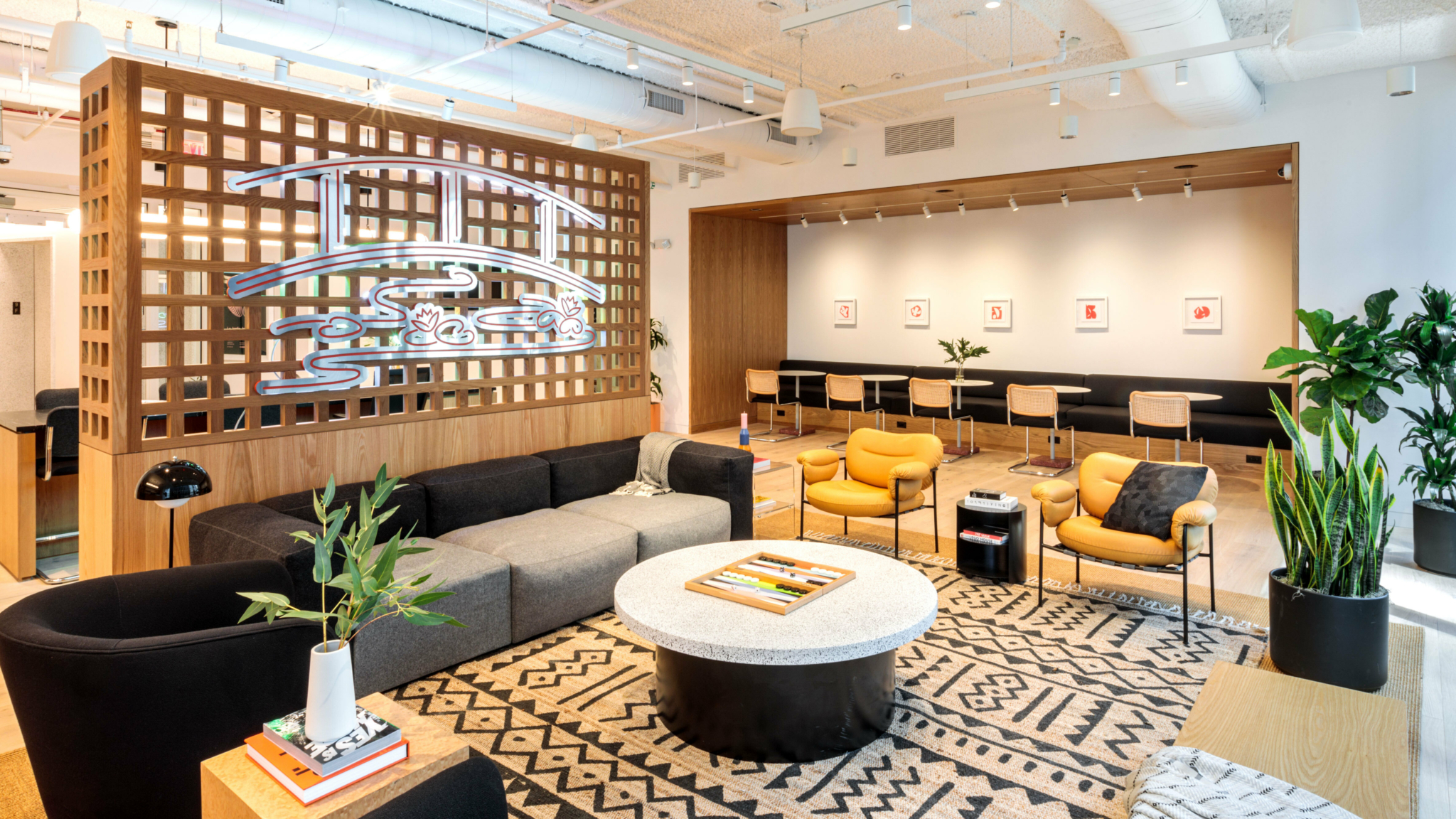Space is a powerful tool to foster engagement, inspire innovation, and drive productivity. But what exactly does an optimal space look like? In the Science of Space, we explore how the science of intentional design can turn any work environment into a holistic experience.
There are certain design elements you can expect in a modern office space: open floor plans, motivational messaging, an impressive array of snacks and – in many cases – lush office greenery. Gone are the days of grey walls and rows of cubicles. Some of the most successful companies in the world are incorporating indoor plants and courtyard landscaping into their office layouts.
When Apple announced plans for its Silicon Valley campus, the designs involved planting almost 9,000 trees. Inside Amazon’s Seattle headquarters, you’ll find “spheres” of more than 40,000 plants from around the world. And, of course, greenery is a staple in all WeWork coworking spaces.
Then, there is the follow-on effect: entire companies built on keeping office plants alive. There are designers solely dedicated to corporate plant walls and apps to help you select the most suitable plants for your space.
But office greenery is more than a trend or well-timed business opportunity, and several studies show the benefits extend far beyond the aesthetic.
‘If your office has a rooftop or balcony, hold community events there and invest in greenery for your indoor space in the form of palms, potted plants, and other botanicals,’ says VP of product and commercialisation at WeWork Michael Hershfield. ‘Your employees and your company will benefit.’
We highlight the ways office greenery – or biophilic design – increases workplace happiness and heightens productivity below.

The benefits of indoor plants in the office
One of the first studies into the long-term effects of office plants was conducted in 2014 by researchers in Australia, the UK and the Netherlands. It examined three office environments over several months and found greenery significantly increases workplace satisfaction in employees, heightens self-reported concentration levels and improves perceived air quality.
Researchers also found a clear ROI: employees are significantly more productive when surrounded by office plants.
‘Simply enriching a previously spartan space with plants served to increase productivity by 15 per cent – a figure that aligns closely with findings in previously conducted laboratory studies,’ lead author Marlon Nieuwenhuis told Science Daily. This ‘identifies a pathway to a more enjoyable, more comfortable and a more profitable form of office-based working’.

How do office plants increase happiness and productivity?
Office greenery and workplace happiness and productivity go together because of our appreciation for nature, the power of attention stimuli and – according to one thought leader – the ‘friendships’ we form with living things.
Indoor plants are stress-relievers
Biophilic design holds that natural environments evoke in humans a different response than urban environments. They give us a sense of being away, feeling relaxed, tranquil and simply existing. And when introduced to sterile environments, natural elements can help in mental recovery and stress relief.
In an extensive literature review, Kaitlyn Gillis and Birgitta Gatersleben of the UK’s University of Sussex link indoor plants to stress reduction and pain tolerance. ‘Plants have the ability to directly bring green, living nature into the indoor environment,’ their report states. ‘Psychological studies have demonstrated the health and wellbeing benefits of placing plants inside.’
The researchers cite a handful of studies, including breakthrough research by Roger Ulrich in 1991 that found hospital patients with views of the outdoors require less pain medication than those who are unable to connect with nature.

Office greenery helps ‘replenish’ our attention capacity
Researchers from the University of Michigan suggest urban environments are brimming with ‘dramatic stimuli’, or distractions that require urgent, directed attention to avoid, say, being hit by a bus. Certainly, receiving an urgent request or an email that requires an immediate reply is less dramatic than being hit by a bus, but the stimuli is similarly immediate and ‘top-down’.
This is different in nature, which is ‘filled with intriguing stimuli that modestly grabs attention in a bottom-up fashion’, the researchers say, adding natural environments can help ‘replenish’ our capacity for attention and focus. Something as simple as viewing pictures of nature can make a difference, the researchers found; imagine what a wall garden might achieve?
Office plants can double as ‘friends’
Taking the stage at a TEDxWhiteRock thought-leadership conference, Canadian engineer Mike Robinson shared a novel approach that uses desk plants to boost employees’ personal accountability. Instead of simply giving each employee a desk plant or dressing the office in greenery, Robinson asked his team to choose their desk plants and make their decisions based on the feelings of the plant.
‘So you have to put yourself in the spot of the plant, as it were, and say, “Which person do I want to be my new friend?”‘ he says. This encourages ownership and heightens a sense of accountability. The results? Robinson’s empirical observations suggest employees are working more efficiently since choosing their ‘plant friend‘, and he says no plant has died in five years.

Indoor plants don’t purify the air, but the perception is there
Though many articles (and plant retailers) suggest the benefits of indoor plants extend to ‘purifying the air’, this is likely not the case in a standard office.
These claims are based on 1989 research by NASA scientist Bill Wolverton that did declare plants to be a ‘promising economic solution to indoor air pollution’. However, this experiment was conducted in an airtight laboratory with the aim of determining whether plants would benefit humans in closed environments in space.
‘It’s such an alluring and enticing idea,’ Elliott Gall from Portland State University tells The Atlantic. ‘But the scientific literature shows that indoor houseplants – as would be typically implemented – do very little to clean the air.’
The perception of air quality improves with office greenery, however. And perhaps in workplaces – where employees should feel happy, energised and engaged – that’s also an important result.
Finding inspiration in office plants
Walls draped in greenery, succulents on window sills, potted plants on desks—the picture is far removed from traditional office space. But the benefits of office greenery are multifold. Office plants help increase productivity and replenish focus. People spend longer in spaces with biophilic designs, and workplace happiness improves when natural elements are introduced.
‘Get a plant that’s interesting to you and the people around you,’ Bloomscape CEO and WeWork member Justin Mast says. ‘Find plants that you can relate to. Or, more simply, just get excited about.’
Rethinking your workspace?










